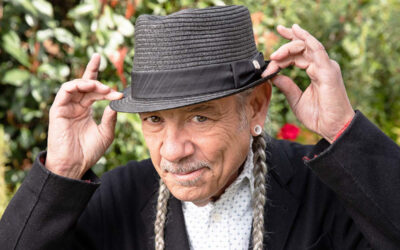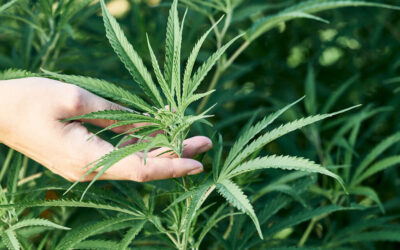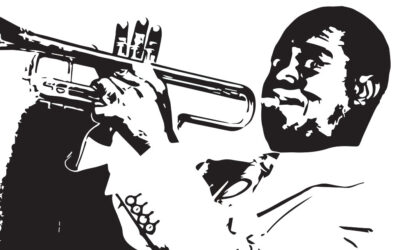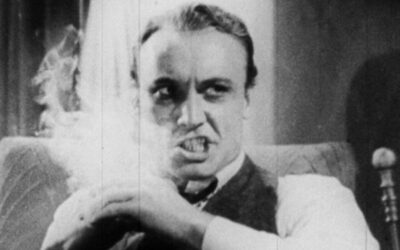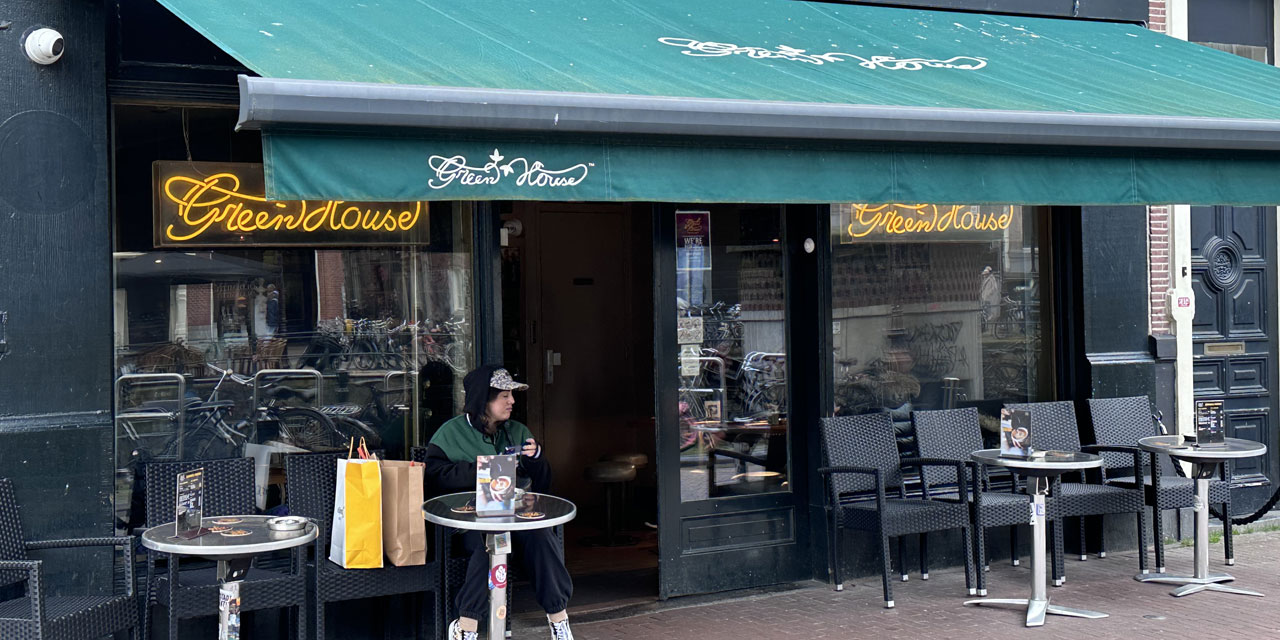
Amsterdam Coffeeshops
A Journey Through Time and Culture
In the heart of Amsterdam, amid the picturesque canals and historic architecture, lies a cultural phenomenon that has captured the imagination of locals and tourists alike: the coffeeshops. Additionally, contrary to what their name suggests, these establishments aren’t just about serving coffee; they have become synonymous with a unique aspect of Dutch culture—the legal consumption of cannabis. However, how did these iconic coffeeshops come to be, and what is their fascinating history?
Origins in the 1970s: A Time of Social Evolution
The narrative of Amsterdam’s coffeeshops unfolds against the backdrop of the 1970s, a period marked by cultural upheaval and societal transformation worldwide. Moreover, it was during this era that the Netherlands embraced a comparatively liberal approach to drug policy, making a clear distinction between “soft” and “hard” drugs. Additionally, cannabis, categorized as a “soft” drug, underwent decriminalization for personal use, paving the way for the emergence of a novel establishment—the coffeeshop.
The Bulldog: Pioneering Amsterdam’s Cannabis Culture
The first coffeeshop in Amsterdam, aptly named “The Bulldog,” opened its doors in 1975. Located in the city’s historic Red Light District, The Bulldog quickly became a symbol of the city’s newfound tolerance towards cannabis. Its laid-back atmosphere and welcoming approach to cannabis consumption attracted locals and tourists alike, setting the stage for the proliferation of similar establishments across Amsterdam.
Amsterdam’s Coffeeshop Culture: A Growing Haven of Liberalism
Throughout the 1980s and 1990s, the number of coffeeshops in Amsterdam continued to grow, reflecting the city’s reputation as a haven for liberal attitudes and alternative lifestyles. Additionally, these establishments varied in size and style, from cosy cafes tucked away on quiet streets to bustling hubs of activity in the city centre. Despite occasional crackdowns and legal challenges, the coffeeshop culture thrived, becoming an integral part of Amsterdam’s identity.
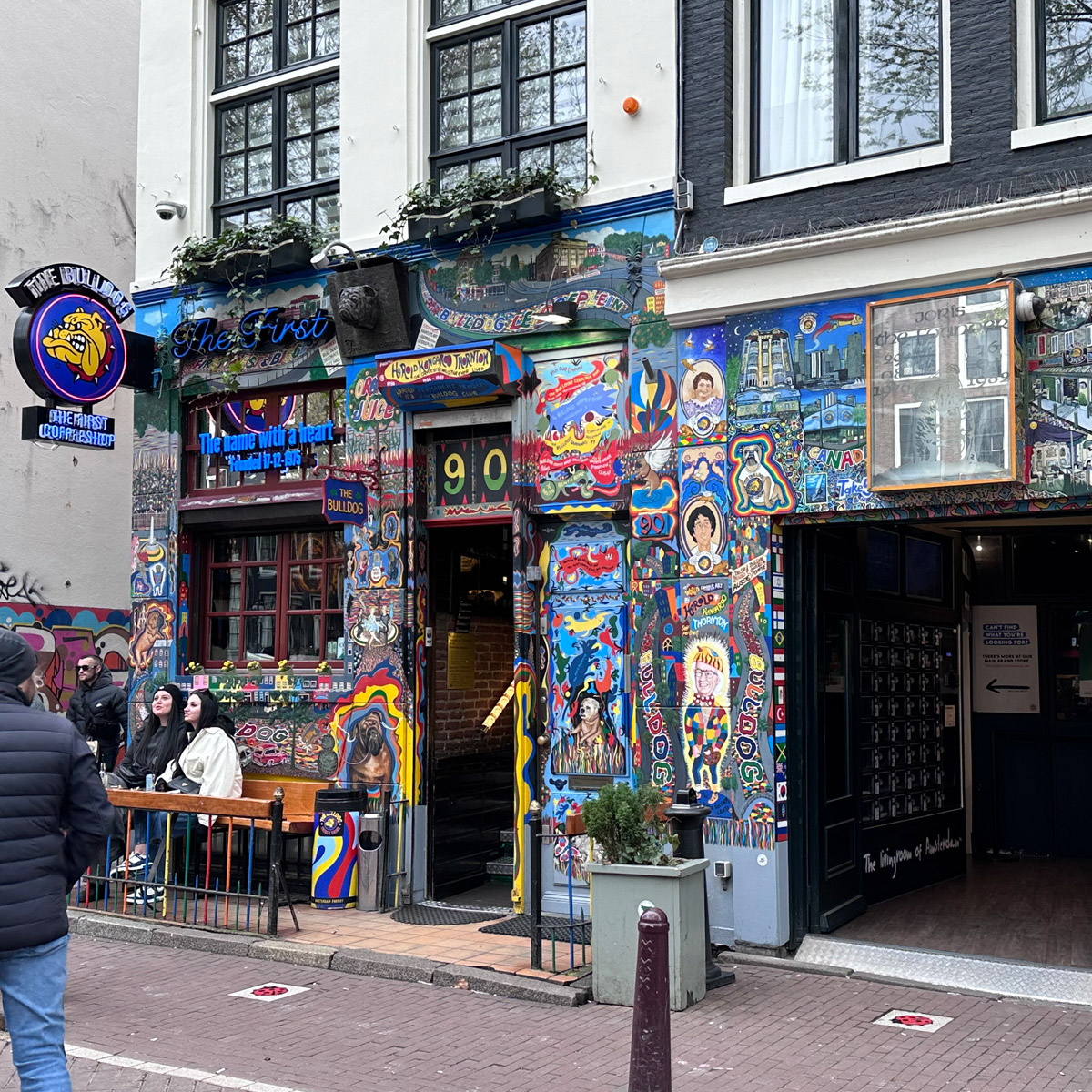
The Bulldog – Amsterdams First Coffeeshop
Embracing Tolerance: Amsterdam’s Pragmatic Drug Policy
In the mid-20th century, Amsterdam took a groundbreaking approach to drug policy, opting for tolerance and regulation over heavy-handed enforcement. This decision laid the foundation for the city’s iconic coffeeshop culture.
Guidelines and Regulation: Nurturing Responsible Consumption
Under this policy, coffeeshops were permitted to operate, provided they adhered to strict guidelines. Moreover, these regulations included measures to prevent the sale of cannabis to minors and limits on the quantity of cannabis sold per transaction.
Economic Impact: Cultivating Tourism and Prosperity
Amsterdam’s progressive stance towards cannabis not only mitigated the adverse effects of drug use but also proved to be an economic boon. Furthermore, coffeeshops became magnets for tourists, stimulating job creation and fostering a vibrant local economy.
Navigating Challenges: Tightening Regulations Amid Concerns
Over time, concerns about drug tourism and public nuisance prompted successive Dutch governments to tighten regulations on the coffeeshop industry. Consequently, this led to closures and increased enforcement, posing challenges to the coffeeshop community.
Cultural Icons: Anchors of Amsterdam’s Identity
Despite these hurdles, coffeeshops remain vital cultural institutions in Amsterdam. They continue to attract a diverse array of visitors, offering a unique blend of relaxation, socialization, and community spirit.
Looking Ahead: Uncertain Future, Enduring Legacy
As Amsterdam evolves, the fate of its coffeeshops hangs in the balance. While facing ongoing challenges from shifting political landscapes, they stand as resilient symbols of Dutch culture. Moreover, they welcome all who seek to experience the city’s spirit of tolerance, diversity, and progressivenes.

